heart attack symptoms
Cardiac Arrest or Heart Attack: Are They similar?
Many a time, the terms cardiac arrest and heart attack are used interchangeably, but they aren't similar. However, cardiac arrest and heart attack both are life-threatening emergencies and have many similar symptoms and preventions, but they're actually two different heart-related problems with radically different causes and treatments. It could be said that a heart attack is a “circulation” issue and a cardiac arrest is an “electrical” problem. In order to understand the difference between these two conditions, you need to understand what happens in both of these processes. Let’s discuss the differences between a heart attack and a cardiac arrest. What is a heart attack? A heart attack or a myocardial infarction occurs when the blood supply that brings oxygen to the heart muscle is inadequate. It often results from a blockage caused by a clot in the coronary arteries that feed the heart. If the blockage is not resolved quickly, the heart muscle begins to suffer damage or start to die. A troponin test can help detect acute heart injury. Book a test here. What are the symptoms of a heart attack? Not everyone has the same symptoms. Some people show warning signs or symptoms while others show no signs at all. Symptoms of a heart attack that people may report include: Chest pain mostly in the center of the chest Spreading of chest pain to the arms, jaw, neck, back, and abdomen Pain in the upper body Fatigue Feeling lightheaded Sweating Trouble breathing Nausea or vomiting Coughing or wheezing Palpitations What causes a heart attack? Heart attacks are generally caused by coronary heart disease; a condition caused by a buildup of fat and cholesterol in the coronary arteries forming plaques. People with CHD may experience a heart attack if a plaque ruptures and forms a blood clot which in turn blocks the coronary artery. Risk factors like smoking, unhealthy eating habits, diabetes, obesity, high cholesterol, and hypertension may increase your risk of developing coronary heart disease. And consequently, a heart attack. What is a cardiac arrest? A cardiac arrest usually happens suddenly with no warning. It is different from a heart attack. In a cardiac arrest, the heart suddenly stops beating; whereas in a heart attack the heart usually doesn’t stop beating. A cardiac arrest is triggered by an electrical malfunction in the heart that disrupts the heart’s normal rhythm resulting in a rapid and chaotic heartbeat, and in many cases, the heart stops beating altogether. This disrupts the blood and oxygen flow to the vital organs, including the brain and lungs, causing the person to gasp or stop breathing. One may lose consciousness and becomes unresponsive within seconds. Cardiac arrests can be fatal if it’s not resolved within minutes. What are the symptoms of a cardiac arrest? In most cases, there are little-to-no warning signs. More than half of people who experience cardiac arrest have no symptoms. Others may have the following symptoms: Sudden loss of consciousness Blue discoloration of the face No breathing No pulse Chest pain, shortness of breath, dizziness, weakness, heart palpitations, and nausea are few warning signs that may also occur in the period before a cardiac arrest. What causes a cardiac arrest? The potential causes of a cardiac arrest may include: ventricular fibrillation, ventricular tachycardia, coronary heart disease, changes of the heart structure, respiratory arrest, pacemaker failure, choking, drowning, electrocution, hypothermia, sudden drop in blood pressure and excessive alcohol consumption, and drug abuse. A heart attack can also cause cardiac arrest. If a large enough portion of the heart is affected during a heart attack, then the heart may stop beating, leading to a cardiac arrest. What is the connection between a heart attack and a cardiac arrest? These two different heart issues are connected. A cardiac arrest can occur after a heart attack, or while recovery. Heart attacks can escalate the risk for cardiac arrest. It is important to note that the majority of heart attacks do not lead to cardiac arrest. But, most cardiac arrests are caused by heart attacks. Other heart conditions can also disrupt the heart’s rhythm and lead to cardiac arrest. An hs-CRP test (high sensitivity C-reactive protein) along with other tests can help assess a person’s risk for developing heart disease. Book a test here. What actions must be taken in case of a heart attack or cardiac arrest? Call emergency services immediately so that the patient can receive treatment as soon as the services arrive. Emergency services staff are equipped and well trained to revive an unresponsive person whose heart has stopped beating. This can be done either with CPR or with the help of a defibrillator. Using CPR and defibrillators can improve the survival rate of the patient in cardiac arrest. CPR is intended to pump the heart to get blood circulating and deliver oxygen to the organs. The defibrillator sends an electric shock to the heart aiming to restore its normal rhythm. In conclusion, there is a huge difference between a heart attack and a cardiac arrest. Heart attacks are mainly a plumbing problem because it occurs when the blood flow to the heart stops causing a part of the heart muscle to begin to die, whereas cardiac arrest is an electrical problem in which heart suddenly stops beating as a result of rapid and erratic electrical impulses and irregular heart rhythm. There is a long list of symptoms of a heart attack; on the other hand, the main symptoms of a cardiac arrest are lack of consciousness, lack of breathing, and no pulse. There are various causes of a cardiac arrest; while the primary cause of a heart attack is coronary heart disease. If you or a person you’re with is experiencing symptoms that could be either of a heart attack or a sudden cardiac arrest, seek emergency medical attention as they could be life-threatening. Considering that cardiac arrest can be reversed only if treated within minutes, it’s important to act quickly. The longer the person waits to get help, the greater the damage can occur.
Increasing Trend of Heart Attacks Amongst Youngsters
Your heart is a hard-working organ that keeps you going 24*7 365 days by pumping blood throughout the body. It is this pumping action of the heart that provides your vital body organs with oxygen, nutrients and helps eliminate carbon dioxide and waste materials. Like any other muscle in your body, the heart muscle also needs oxygen to survive. When the blood flow that supplies oxygen to the heart muscle is severely or completely cut off, it causes a heart attack. While earlier people used to believe that heart disease affects the elderly only, the sad demise of the well-known actor and model, Siddharth Shukla, has left the entire nation shocked and fueled a debate among fans on can a young (and in fact, quite physically fit) person get a heart attack too! Are heart attacks common in young people? In general, men age 45 or older and women age 55 or older are at an increased risk of getting a heart attack. However, young heart attack victims are more likely to be smokers, obese, and have chronic conditions like high blood pressure or diabetes. So all in all, it’s quite evident that an unhealthy lifestyle may be putting a lot of stress on the heart, predisposing young adults to a heart attack. Make sure to take extra care of your health and get health tests done from time to time. Book our TruHealth Youth Package here. Symptoms of heart attack At many times, heart attacks can sneak up on you without any warning signs. The process of blockade of heart vessels has no symptoms. What happens is that when blood vessels supplying the heart muscle narrow, other nearby blood vessels that serve the heart, called collateral circulation, sometimes enlarge to compensate for the reduced blood supply, hence you may not experience any early signs of heart attack. Following are the symptoms that characterize occurrence of a heart attack Chest pain or discomfort: Most heart attacks cause discomfort or pain in the center of the chest. Some people can feel uncomfortable pressure, squeezing or fullness. It can last more than a few minutes. It may get relieved on its own and then come back. Shortness of breath either in presence or absence of chest discomfort. Cold sweat, nausea or lightheadedness Pain or discomfort in one or both arms, the back, or neck. Symptoms may vary between men and women As with men, the most common heart attack symptom in women is chest pain or discomfort. However, women can be somewhat more likely than men to have some of the other symptoms, including difficulty breathing, nausea/vomiting, and pain in back or jaw. You can have a heart attack and not even know it It is called a silent heart attack. It gives no symptoms, or mild symptoms or goes unrecognised by the sufferer. Reasons for heart attack An excess cholesterol and fat can build up in the coronary arteries, vessels that supply the heart muscle with blood flow. This can cause them to become narrow. This process is known as atherosclerosis and the build up is called plaque. When such a plaque within a coronary artery break, a blood clot can be formed around it. This blood clot can cause blockage in the blood flow through the blood vessel to the heart muscle, leading to oxygen and nutrients scarcity. As a result, a part of the heart muscle can get damaged, causing a heart attack. Keep a check on your cholesterol levels with a lipid profile test. How is a heart attack diagnosed? A heart attack can be diagnosed through certain health tests which include: Imaging tests, such as X-rays, CT scans, and echocardiograms Electrocardiography, a test that measures electrical activity in the heart Blood tests for heart attack can confirm that a (silent) heart attack has occurred. A test that measures cardiac troponin helps to know if a heart damage has occurred. How does a heart attack feel? Having a heart attack is a scary experience. But, not everyone who gets a heart attack succumbs, many people survive heart attacks and enjoy their lives. For this, it is important you know about the risk factors and stray them away. Risk factors Factors that put a youngster at high risk of a heart attack include: Smoking and alcohol High cholesterol levels High blood pressure Obesity Uncontrolled diabetes Sedentary lifestyle A family history High levels of stress Usually, a heart attack results from a combination of factors and not just any one factor. Heart attack emergency treatment at home Heart attack is a medical emergency that you cannot treat at home. However, you should know things that you can do if someone experiences a heart attack Stay in the know with these tips: Let the person sit down, rest, and be calm but quick. Loosen any tight clothing. If the person is unresponsive, call an ambulance, in parallel, begin cardiopulmonary resuscitation (CPR) or perform manual chest compressions. If the person has a known heart condition and takes any chest pain medicine, such as nitroglycerin, and help them get the medicine. If the pain does not subside within 3 minutes of taking it, reach out for medical assistance. Heart attack after COVID-19 Studies have suggested that COVID-19 can cause damage to the heart muscle and affect heart function. Several reasons have been proposed for this including the high levels of inflammation circulating in the body. The effect on the heart can be more severe in people having pre existing heart disease. Ensure taking doctor’s help if you feel any warning signs even after recovering from COVID. Book COVID monitor recovery test here. Preventing heart attack in youngsters A healthy lifestyle is the key to prevention of heart attack. Quit smoking. Smoking more than doubles the risk of getting a heart disease. Keep your vital numbers in check including blood pressure, cholesterol, and blood glucose. Lose weight if you are overweight or obese. Get regular exercise. Even brisk walking for 30 minutes can be extremely beneficial for heart health. Limit bad fats (saturated and trans fats) and sugars. Increase your intake of fresh fruits and vegetables, and whole grains. Check if you are taking too much of alcohol and limit it if the answer is a yes. A heart attack is life threatening and needs emergency medical attention. However, many people have survived heart attacks due to effective and timely treatment. All you need is to start incorporating those small changes one step at a time .
Heart Attack: Causes, Symptoms, Prevention and Treatment
A heart attack also called myocardial infarction is a serious medical emergency in which the blood supply that brings oxygen to the heart muscle is severely reduced or cut off and the heart muscle begins to suffer damage or start to die. It often results from a blockage in the coronary arteries that feed the heart. The lack of blood supply can cause lasting damage to the heart muscle and can be life threatening. Heart attack vs cardiac arrest A heart attack is different from cardiac arrest. In the latter, the heart stops working completely and suddenly stops pumping blood around your body. Both are medical emergencies. What causes a heart attack? Coronary heart disease, the leading cause of heart attacks, is a condition in which one or more coronary arteries become narrowed or blocked. The blockage is most often a buildup of fat, cholesterol, calcium, proteins, and inflammatory cells, which form a plaque in the walls of arteries. One of the plaques can rupture, forming a blood clot at the site of the rupture. This blood clot can starve the heart muscle of oxygen by blocking the blood flow through arteries, resulting in a heart attack. Risk factors like smoking, a high-fat diet, diabetes, high cholesterol, hypertension and obesity can increase your risk of developing coronary heart disease. People aged 65 or older usually have a higher risk than young adults to get a heart attack. Make sure to check your health parameters regularly. Book TruHealth Senior Package here. A spasm in your coronary artery is another rare cause of heart attacks. During coronary spasm, your arteries restrict or shut down blood flow to part of the heart muscle. Use of tobacco and stimulants such as cocaine can cause a life-threatening spasm. Symptoms of heart attack Some people who are having a heart attack have warning signs or symptoms while others show no signs at all. Symptoms of a heart attack that many people report include: Chest pain Pain in upper body Feeling lightheaded Sweating Trouble breathing Nausea or vomiting Coughing or wheezing An overwhelming sense of anxiety Sleep disturbances, weakness, extreme shortness of breath, indigestion, body aches or discomfort in the back or upper body, a general feeling of being unwell are some atypical heart attack symptoms in females that can occur with or without chest discomfort. Recognizing these early symptoms and seeking immediate medical attention is crucial to save a person’s life. How can one reduce risk of heart attack? Adopting a healthier lifestyle is the most effective way to prevent having a heart attack. Lifestyle changes you can make to help prevent a heart attack are: Eat a healthy diet Quit smoking Limit alcohol Control your blood pressure Control your cholesterol and triglyceride levels Maintain a healthy weight Manage diabetes Manage stress Get regular exercise Get enough sleep Treatment of heart attack Diagnosis and treatment of heart attack might be complex and different depending on which type of heart blockage you've had. A complete blockage means you've had an ST elevation myocardial infarction (STEMI) and a partial blockage means you've had a non-ST elevation myocardial infarction (NSTEMI).Treatments differ for STEMI versus NSTEMI, although there can be some overlap. If you have a STEMI, the most serious form of heart attack, get immediate medical assessment and treatment. It is important to get prompt treatment, to unblock your coronary arteries restoring blood flow to part of the heart muscle and minimizing the heart muscle damage. Treatment may involve different techniques like use of clot-dissolving drugs (thrombolysis), coronary angioplasty (percutaneous coronary intervention) or a bypass surgery depending on when your symptoms started and how soon you can access the treatment. Coronary angiography is done first to assess your suitability for coronary angioplasty. Coronary angioplasty and stenting: In this procedure, also known as percutaneous coronary intervention (PCI), doctors guide a long, thin tube with a sausage-shape balloon at the end (catheter) through an artery in your groin or arm to a blocked artery in your heart. Once the catheter is in position, the balloon is inflated to open a blocked coronary artery and restore blood flow. A flexible metal mesh stent almost always is inserted into the artery to help keep it open afterwards. You may also be given blood-thinning medicines, such as low-dose aspirin, to prevent further clots from forming. You may need to continue taking these medicines for some time after angioplasty. In some cases, coronary angioplasty may not be technically possible. In such circumstances, coronary artery bypass surgery may be considered as an alternative operation. Coronary artery bypass surgery: It involves taking a healthy blood vessel from another part of your body, usually your chest, arm or leg and sewing it to the coronary artery above and below the narrowed or blocked area, allowing blood flow to the heart to bypass the narrowed section. You'll likely remain hospitalized for several days after blood flow to your heart is restored and your condition is stable. If you have the less serious types of heart attack (NSTEMI), blood-thinning drugs (antiplatelet agents and anticoagulants) are usually recommended to inhibit blood clot formation. The drugs used to break down blood clots, known as thrombolytics or fibrinolytics, are usually given by injection. In some cases, further treatment with angioplasty or bypass surgery may also be recommended in cases of NSTEMI or unstable angina, after initial treatment with various drugs. Be aware but don’t panic Having a heart attack is a frightening experience. A heart attack can be life threatening and requires immediate medical treatment. If anyone has symptoms of a heart attack, access medical care at once. With immediate medical attention, there is often a good chance of a positive outcome.
Know about your Heart on this World Heart Day 29th Sept 2018
Heart, the little organ sitting in our chest, works continuously throughout our life. It keeps on pumping and circulating blood in our body. While our heart works tirelessly to keep us going, we do our bit by damaging it in every possible way -many a times subconsciously. On World Heart Day which falls on 29th September, let us come together and make conscious efforts to know this very important organ and vow to take care of it. What is heart and what are its functions? The heart is a muscular organ that pumps blood and circulates it throughout our body, making up the circulatory system. The blood carries oxygen and nutrients to the body tissues which is the basic requirement of survival. What are the different ailments of heart? Heart failure is the deadliest among all the heart problems but to reach to that point the heart goes through a number of phases. It starts from Angina or chest pain due to blockage in the blood vessel supplying blood to the heart muscle. If remained untreated it may eventually lead to Myocardial Infarction or Heart Attack in common terms which happens because of death of cardiac muscle cells. Other ailments in this cycle are LVH (Left Ventricular Hypertrophy), IHD (Ischemic Heart Disease) and CHD (Congestive Heart Disease). Other ailments like Valve diseases and Cardiomyopathy are also common in the Indian Population. The most common of them all which leads to high rates of mortality and hospitalization, is Heart Attack. Let us understand what the possible indicators of the onset of heart attack could be. Signs and Symptoms of heart attack: Many people, who have a heart attack, pose with some warning signs while some remain totally asymptomatic. The early warning signs of a heart attack include: Breathlessness Cold Sweat Palpitation Pain in upper body parts Severe signs and symptoms include High to very high chest pain Severe pain in upper body parts, mainly shoulders and upper arms Nausea and Dizziness Heavy Breathing What are the risk factors of a heart attack? A heart attack can occur to anyone but there are some risk factors that enhance the susceptibility to an attack. They are categorized into Uncontrollable and Controllable risk factors. Uncontrollable risk factors: Age- In Today’s fast-moving world people as young as 35 years of age are also vulnerable, however the prevalence is more common in age group of 60+. Sex- Men are more susceptible as compared to women. However, post menopause, women become more susceptible. Race- People of African descent are more susceptible. Family History- People who have a family history of heart ailments are at a greater risk. Controllable risk factors: Smoking Alcohol consumption Obesity High cholesterol Unhealthy diet Lack of exercise High Sugar Levels Stress How can you prevent a heart attack? There are many risk factors that are not in your control but of course, there are risk factors which we can control. Following are some basic tips that keep away the chances of a heart attack. Adopting a healthy lifestyle should be the first step in dealing with the possible chances of a heart attack. Quitting the awful habit of smoking should be on top priority. Other things that can be done to improve the health of the heart are: Maintaining a heart-healthy diet There are many heart-healthy foods that cut off the chances of a heart attack. The best foods for heart health include: Fishes with high omega-3 content like salmon, mackerel, trout, herring, and tuna Nuts like almonds and walnuts Dark beans like black beans or kidney beans Berries like blueberries, cranberries, raspberries, and strawberries Red, orange, and yellow vegetables like carrots, red peppers, sweet potatoes, etc. Fruits like papaya, oranges, etc. Dark chocolate Flax seeds Tofu Regular workout Working out regularly is a must. Indulge in any physical activity like running, swimming, yoga, or a sport. Quit alcohol and smoking Alcohol consumption and smoking do irreparable damage to the heart. Quit them as soon as possible. Regular Check-ups Regular heart check-up is really necessary. Keep a tab on your lipid, sugar and weight levels. Consult your doctor at regular intervals. The Bottom Line Maintaining a proper heart health is the only thing that could keep us going. On this World Heart Day, come together and pledge that we will know our hearts and will always take care of it. https://www.youtube.com/embed/rlzFwUQhfHU
 Home Visit
Home Visit Upload
Upload




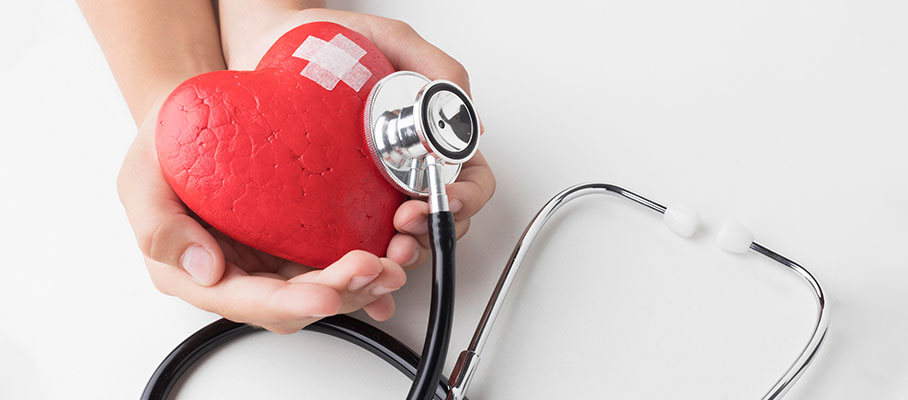

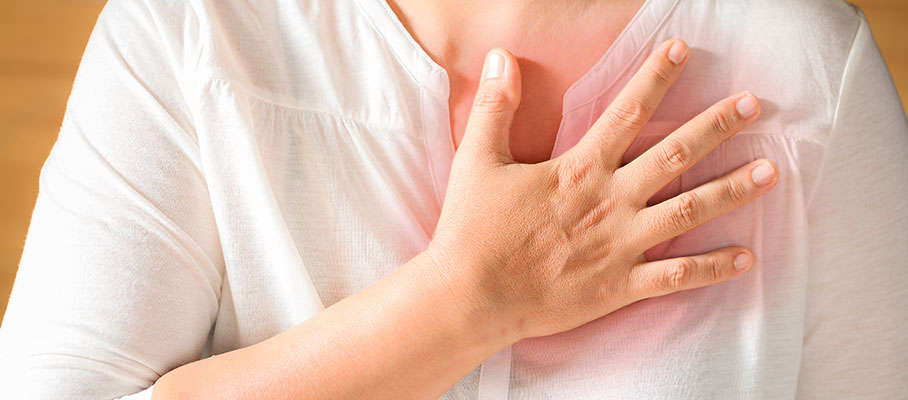
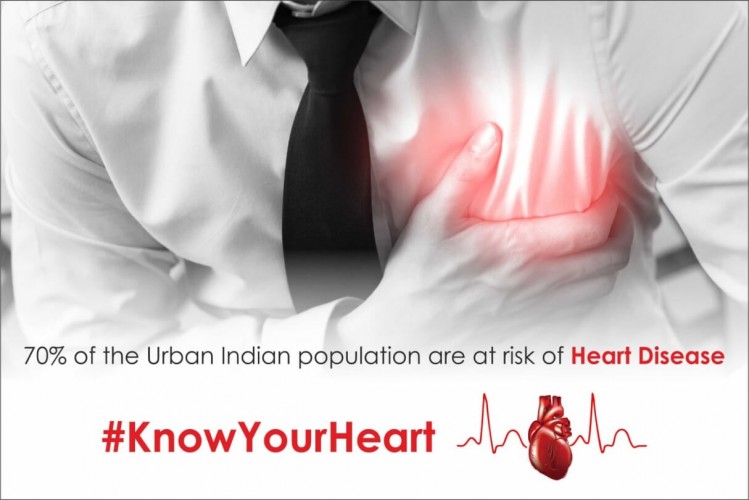





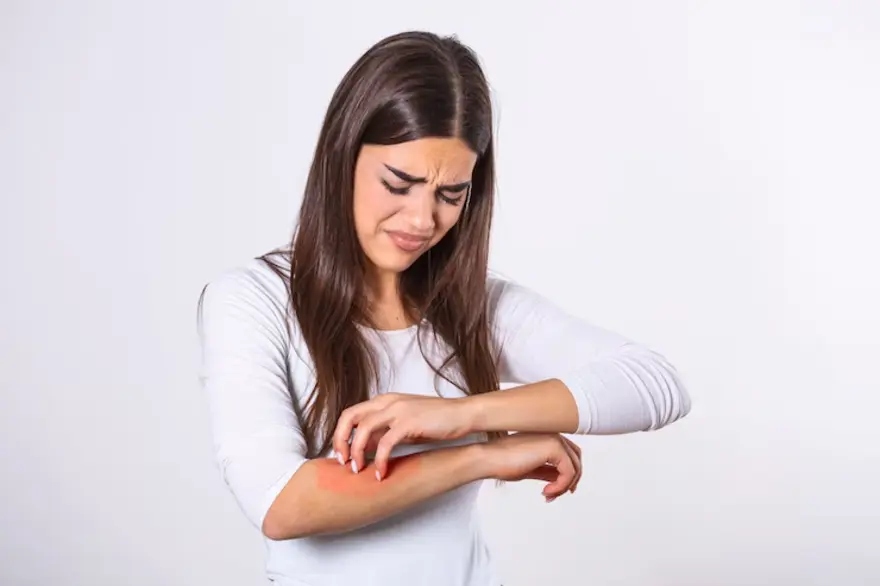


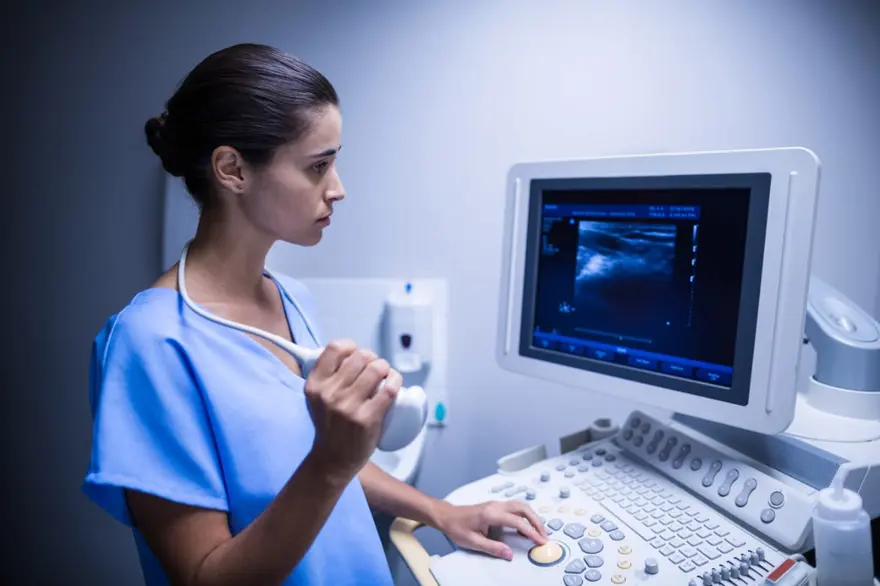

 WhatsApp
WhatsApp